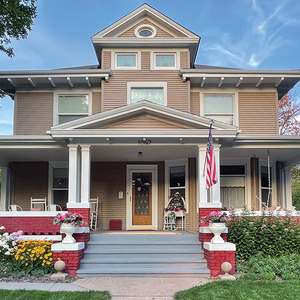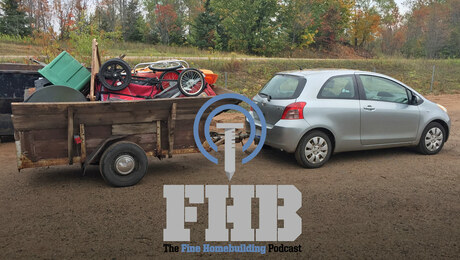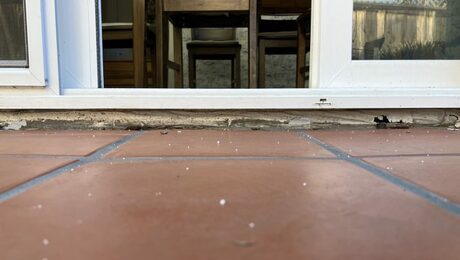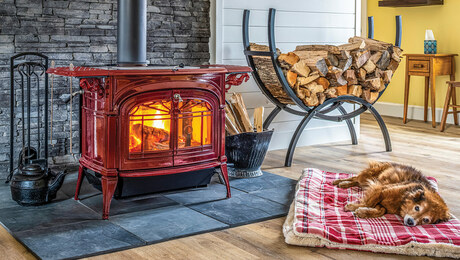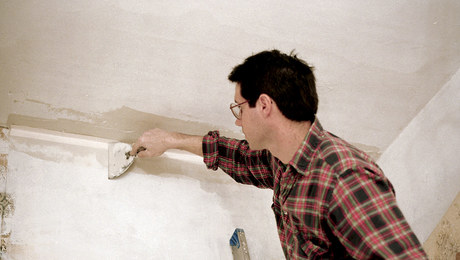Q:
I own a brick house built in 1927 in Colorado. Our hot summers and cold winters have caused the mortar to break down and a lot of bricks to loosen up. I’ve been told that the best way to handle this problem is to cover the bricks with a layer of synthetic stucco using a product described as vinyl with a fiberglass backing. What is this material, where can I find it, and what other techniques would you recommend?
C. A. Allen Jr., Lakewood, CO
A:
Matthew Scolforo, a staff engineer for the Brick Institute of America, replies: The vinyl material you mention is probably an acrylic resin-based stucco. The acrylic resin is a liquid that is added to portland cement in a 1:3 ratio to form the stucco. Some suppliers may also offer the material preblended in a bag mix. The fiberglass backing is most likely a fiberglass-mesh material that is sometimes embedded into stucco to resist shrinkage and cracking from movement.
Acrylic resin and fiberglass mesh should be available at a building materials or stucco-supply store or through a lath-and-plaster supply company. But for your 1927 house, I would not recommend the application of an acrylic resinbased stucco. This type of coating does not breathe, and it will not allow any moisture to pass through.
An acrylic resin-based stucco will work only if all moisture is kept out of the walls. In an old house like yours, however, this guarantee is difficult to ensure. This type of coating will trap moisture within the brick masonry, which in turn leads to more rapid deterioration of the brick, mortar and stucco.
There is a similar technique that could be used in your situation. You could rake the mortar joints back to dense material and then parge the masonry with a 1-part portland cement to 3-parts sand mixture. A cement-and-sand mixture will permit drying of the masonry and avoid the failures associated with nonbreathable masonry coatings such as acrylic resin-based stucco. The parge coat should be about 3/8 in. thick on the masonry surface. A metal or fiberglass mesh sometimes is embedded into the parge coat to resist cracking.
This technique will alter the appearance of the masonry dramatically. However, this technique is much simpler than repointing, avoids the tricky step of matching mortar colors and may be the appropriate choice if you wish to do the work yourself.
Although parging might be easier, the most appropriate remedial measure for your house would be to repoint the mortar joints. We estimate the maintenance life of mortar joints to be about 25 years for exposed exterior masonry in Colorado’s climate.
However, quicker deterioration often can be found near the tops and bottoms of masonry walls, and these locations may be the only areas that require repointing. You need to repoint any mortar joints that have cracked, disintegrated or eroded more than 1/4 in.; or where the mortar has dislodged entirely from the joint.
When you are repointing, it is important to remove the existing mortar to a depth of at least 3/4 in. New mortar should be inserted in compacted layers approximately 1/4 in. thick. It is important to use a relatively weak repointing mortar. In most cases, a type-N or type-O mortar will suffice. Use a type-N mortar unless the brick or the mortar remaining in the joint is badly disintegrated. Mortar types vary in their proportions of portland cement, hydrated lime and sand. Type-N mortar contains 1 part portland cement, 1 part hydrated lime and 6 parts sand, while type-O mortar is 1 part portland cement, 2 parts hydrated lime and 9 parts sand.
You may have to mix up a few trial batches of mortar or add mortar coloring to match your particular mortar color. Be sure to compare dried mortar samples to the original mortar joints to determine your match. Because repointing is a labor-intensive process and an art to execute successfully, you may wish to hire an experienced masonry repointer to do the work.



